Free download: Top 10 Natural & Easy Remedies for Joint Pain from Home. Learn these helpful remedies.
Estimated Reading Time: 6 minutes read
Osteoarthritis of the elbow is a common yet often misunderstood condition. It occurs when the cartilage in the elbow joint wears down over time, leading to pain, stiffness, and reduced mobility. This guide aims to provide a thorough understanding of elbow osteoarthritis, including its symptoms, causes, and effective management strategies.
The condition is most prevalent among older adults but can affect anyone, especially those with a history of elbow strain or injury. Early detection and proper management are crucial for maintaining joint health and quality of life.
Table of Contents
Symptoms of Elbow Osteoarthritis
Elbow osteoarthritis manifests through various symptoms, which can develop gradually. Key symptoms to watch out for include:
- Persistent or intermittent pain in the elbow.
- Stiffness in the elbow, particularly noticeable in the morning or after periods of inactivity.
- A noticeable decrease in the range of motion makes it hard to extend or flex the arm fully.
- Swelling or inflammation around the elbow joint.
- A sensation of grating or crackling when moving the elbow due to the rough surfaces of the joint rubbing together.
It’s essential to consult a healthcare provider if these symptoms persist, as early intervention can significantly improve the management of the condition.
Causes of Elbow Osteoarthritis
Understanding the causes of elbow osteoarthritis can help in its prevention and management. The leading causes include:
- Age-related wear and tear of the elbow joint.
- Previous injuries, such as fractures or dislocations that can accelerate joint wear.
- Repeated stress on the elbow joint from occupational activities or sports.
- Genetic factors that may predispose individuals to joint issues.
While some causes like aging and genetics are unavoidable, understanding and mitigating risk factors like repetitive stress can help in managing the condition more effectively.
The Role of Exercise in Managing Elbow Osteoarthritis
Exercise is a cornerstone in the management of elbow osteoarthritis. The benefits of a regular exercise regimen include:
- Alleviating stiffness and improving the flexibility of the elbow joint.
- Strengthening the muscles around the elbow, which can reduce the burden on the joint.
- Decreasing pain and inflammation in the affected area.
- Enhancing the overall functionality of the elbow, aiding in daily activities.
A balanced exercise routine, tailored to individual capabilities and limitations, is crucial for effective management.
Exercise Plan for Elbow Osteoarthritis
A well-designed exercise plan is crucial for managing elbow osteoarthritis. Exercise helps maintain joint mobility, reduce pain, and strengthen the muscles that support the elbow. It’s important to choose exercises that are effective yet gentle enough not to worsen the condition.
A: Range of Motion Exercises
Range of motion exercises are essential for keeping the elbow joint flexible and functional. These exercises help in reducing stiffness and maintaining the joint’s natural movement, which is often compromised in osteoarthritis. Regularly performing these exercises can make daily activities easier and less painful.
1. Elbow Flexion Passive Range of Motion (PROM)
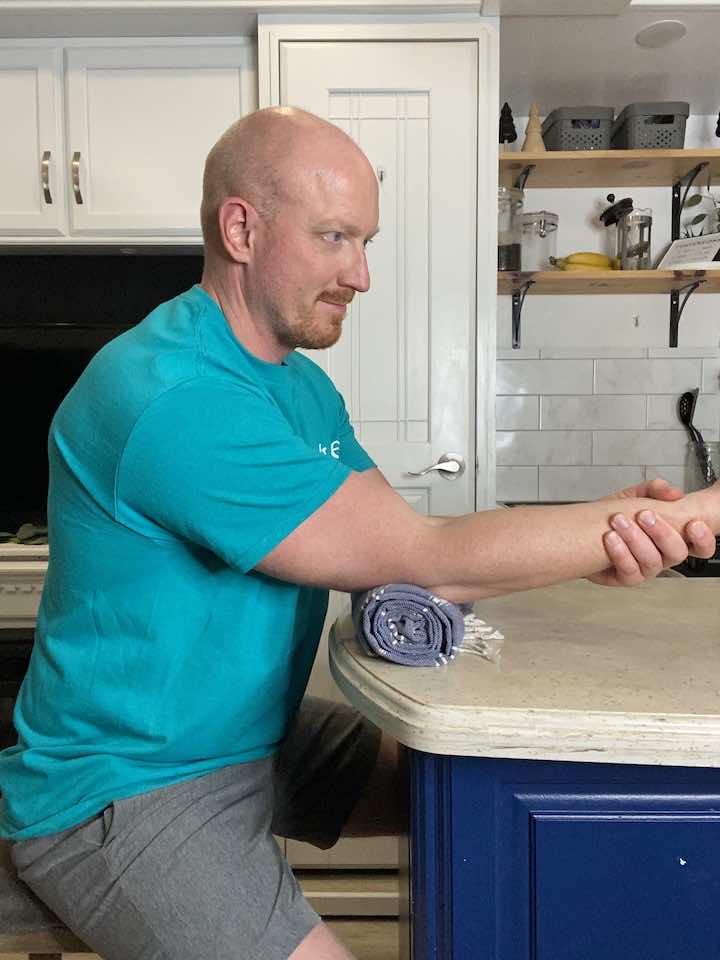
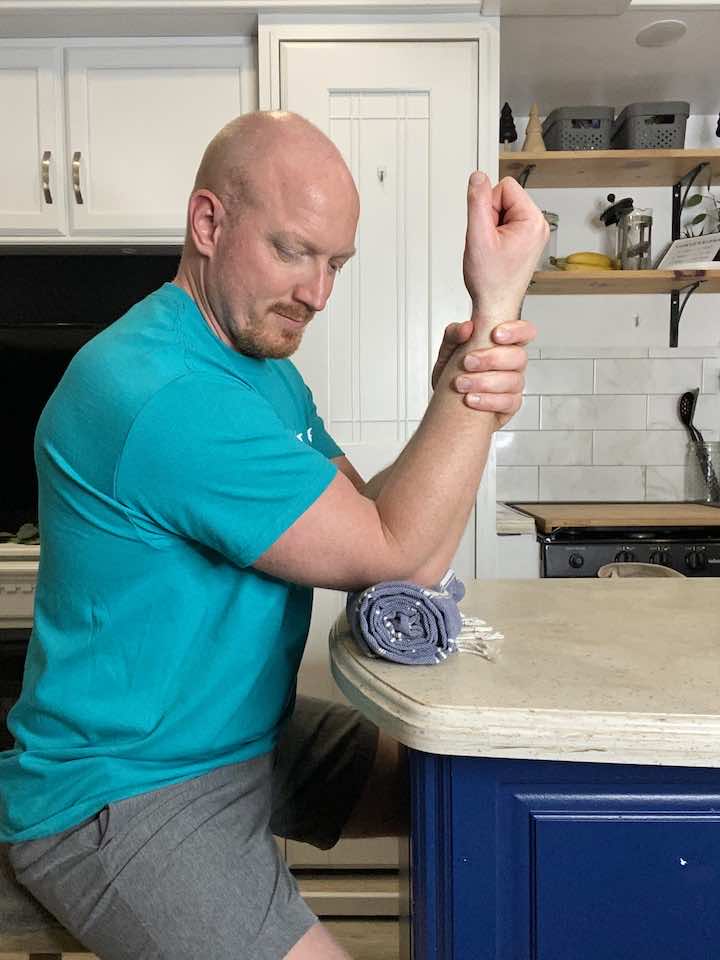
- Place a towel roll on a flat surface and position your affected arm with your elbow resting on the towel roll.
- Use your other hand to help bend the affected elbow, pulling it gently towards your body.
- Hold the stretch for 5 seconds.
- Repeat the exercise 10 times in one session, and aim to do this exercise three times a day.
2. Elbow Extension Passive Range of Motion (PROM)

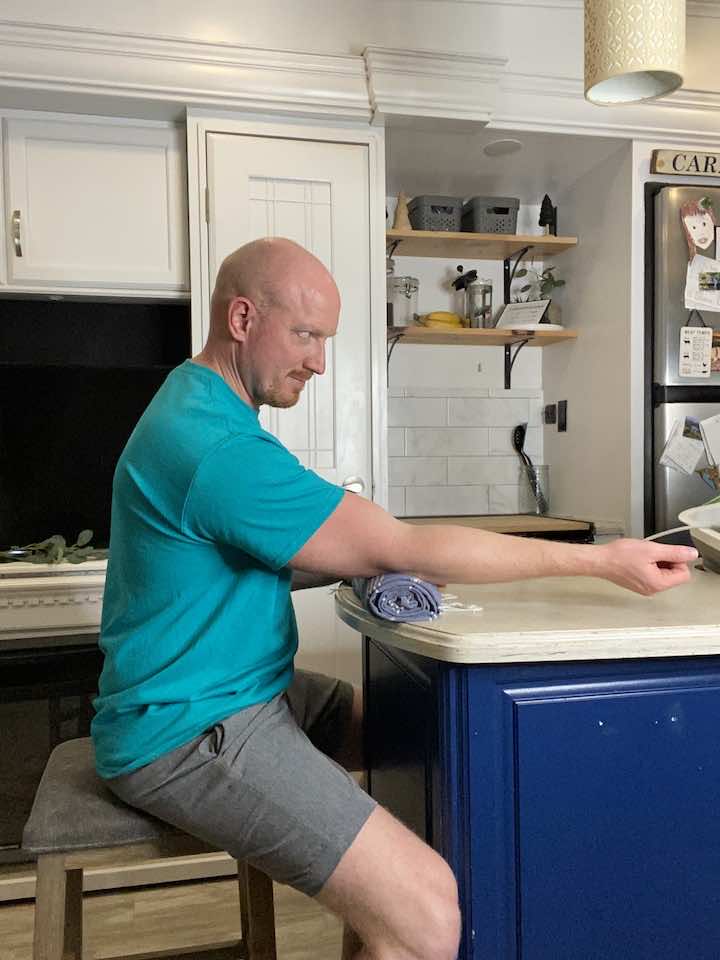
- Place a towel roll on a flat surface and position your affected arm with your elbow resting on the towel roll.
- Allow the affected elbow to straighten and have gravity assist with the stretch.
- Hold the stretch for 5 seconds.
- Repeat the exercise 10 times in one session, and aim to do this exercise three times a day.
- BONUS: Add weight to help increase the stretch.
3. Wrist Flexion Stretch


- Straighten your arm and bend your wrist forward as if signaling someone to “come.”
- Use your opposite hand to gently apply pressure across the back of your hand and pull it towards you until you feel a stretch on the top of your forearm.
- Hold for 30 seconds.
- Repeat 5 times, then move to the other arm.
4. Wrist Extension Stretch
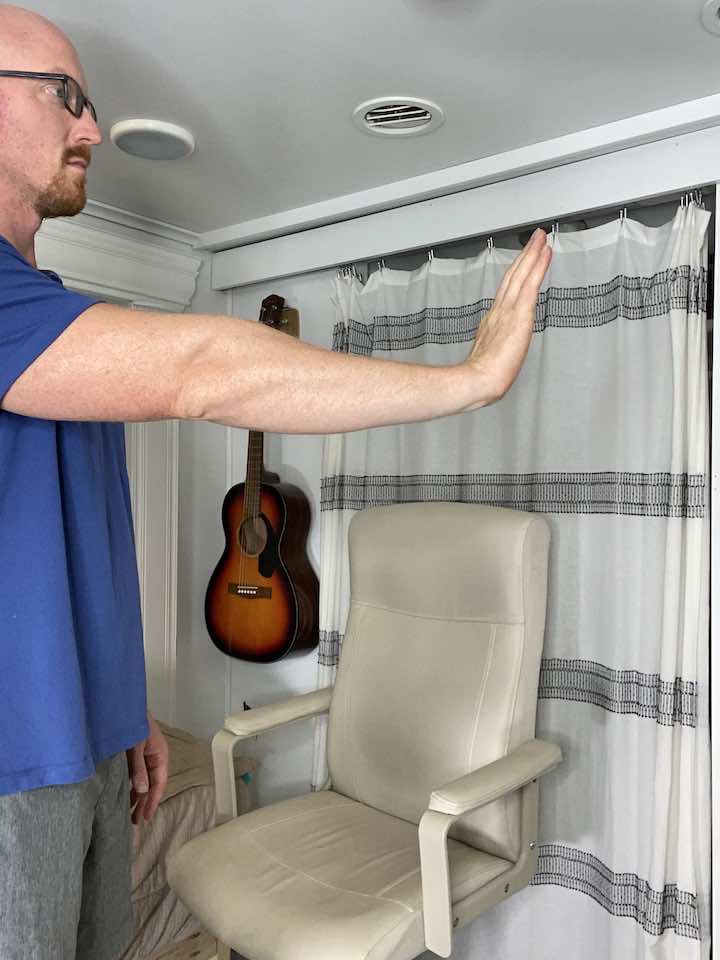
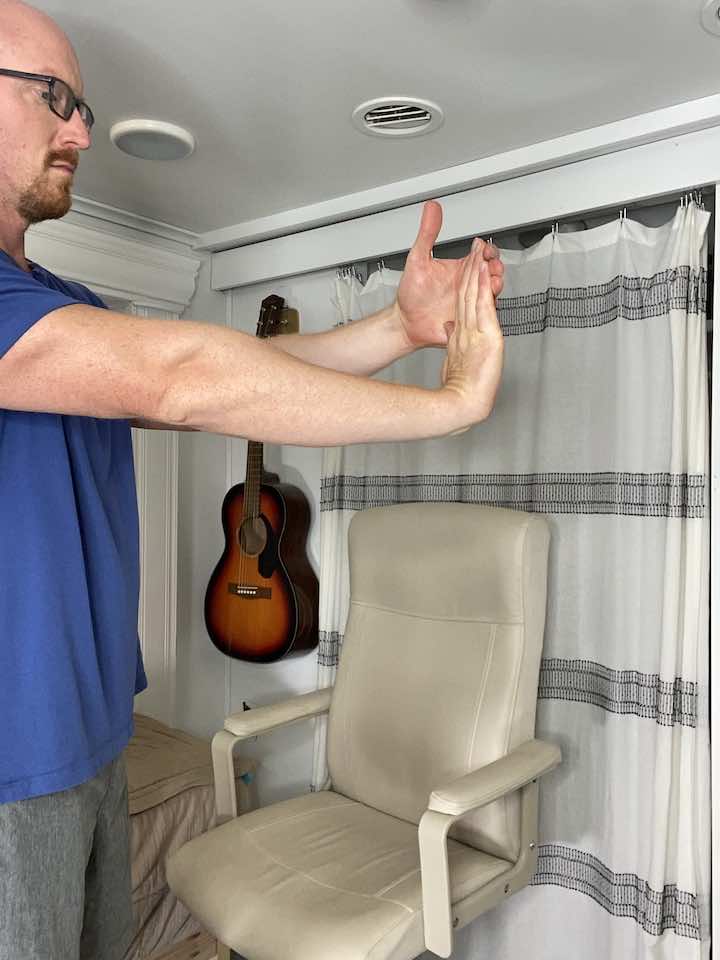
- Straighten your arm and bend your wrist as if signaling someone to “stop.”
- Use your opposite hand to gently apply pressure across the palm and pull it toward it until you feel a stretch inside your forearm.
- Hold for 30 seconds.
- Repeat 3 times, then move to the other arm.
B: Resistance Training Exercises
Resistance training is vital for strengthening the muscles around the elbow. Stronger muscles can better support and protect the joint, reducing the load on it and alleviating pain. These exercises also help in improving the overall strength and stability of the arm, which is beneficial for joint health.
1. Pull Downs with Resistance Band


- Securely attach the resistance band to a high anchor point, such as a pull-up bar or a sturdy doorframe.
- Hold the band with both hands, palms facing forward and hands shoulder-width apart.
- Stand facing the anchor point with your arms extended upwards and your hands positioned above your head.
- Keeping your elbows straight, pull the band down towards your chest while squeezing your shoulder blades together.
- Pause at the bottom of the movement and then slowly return to the starting position.
- Repeat for 10 repetitions and aim for 3 sets.
2. Bicep Curls with Resistance Band


- Stand with both your feet in the middle of the resistance band, holding one end of the band in one hand.
- Keep your arms straight and by your sides, with your palms facing forward.
- Slowly bend your elbow, bringing your hands towards your shoulders while keeping your elbows close to your sides.
- Hold a moment, then slowly straighten your arms to return to the starting position.
- Repeat the movement for 10 repetitions, then switch to the other arm.
- Aim for 3 sets of this exercise.
3. Forearm Supination
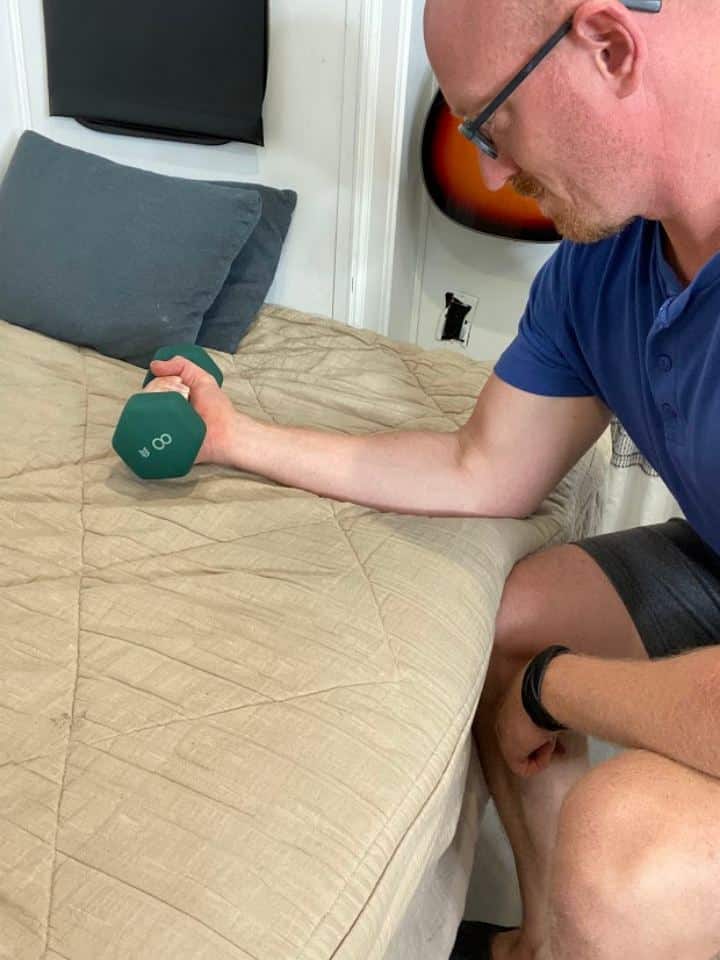
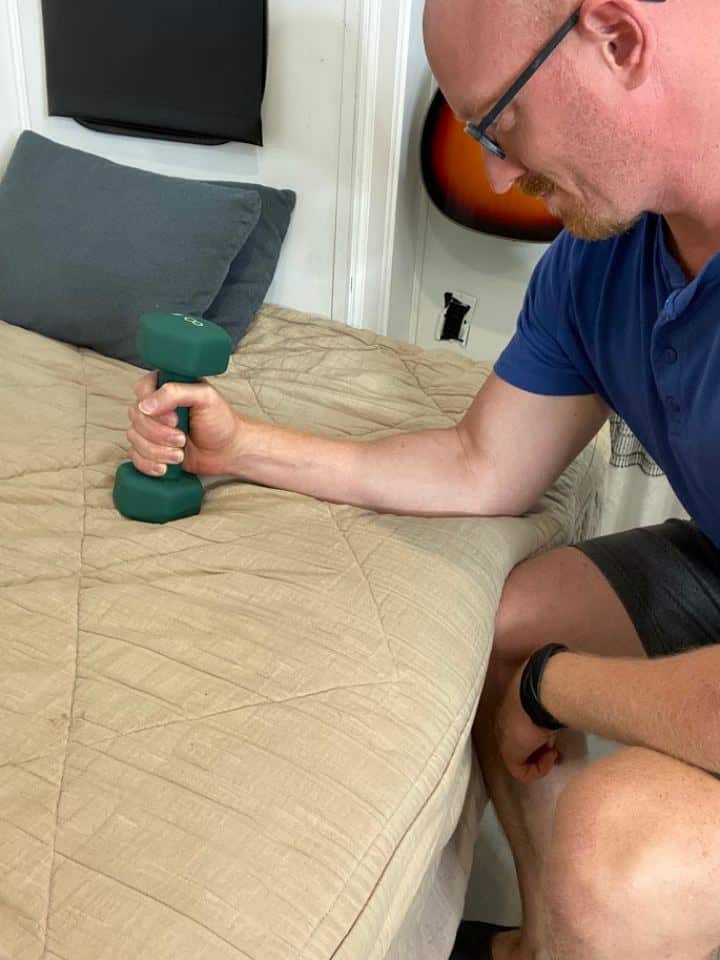
- Begin positioned just like you were for forearm pronation.
- This time, slowly turn the forearm until the palm faces up towards the ceiling, then return to your starting position.
- Repeat 10 repetitions for 3 sets.
4. Forearm Pronation

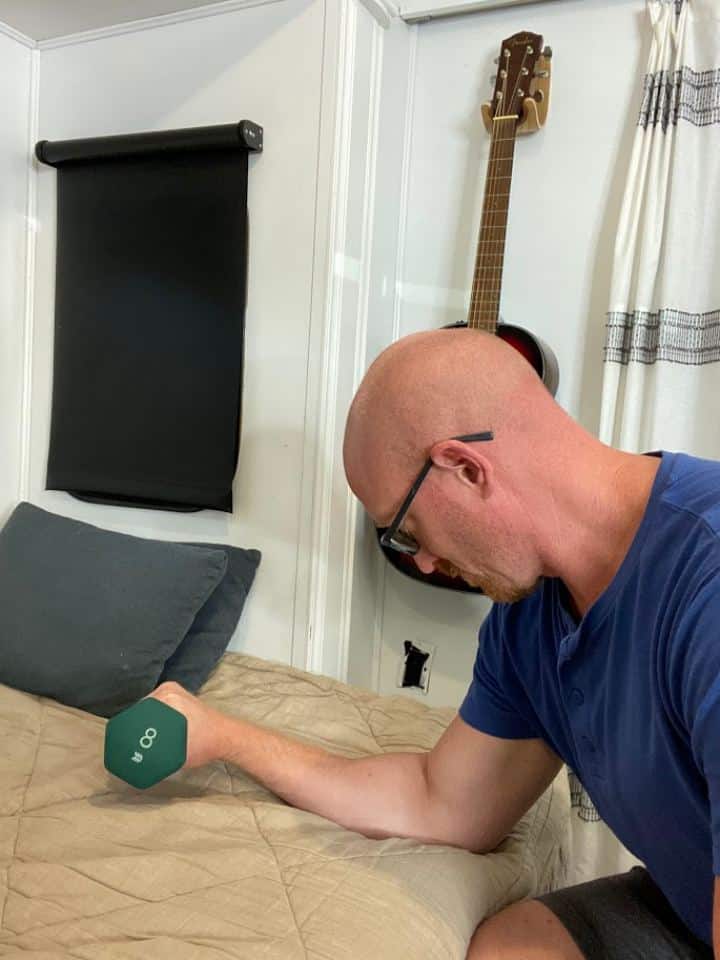
- Begin seated in a chair with the elbow supported on a surface (e.g., kitchen table).
- Position the forearm and wrist so that the thumb is facing the ceiling.
- Slowly turn the forearm until the palm faces down towards the surface, then return to your starting position.
- Repeat 10 repetitions for 3 sets.
Conclusion
Elbow osteoarthritis, while a chronic condition, can be effectively managed with the right approach. Understanding the condition, recognizing its symptoms early, and engaging in a structured exercise routine are key to maintaining joint health and function.
It’s important to work in tandem with healthcare professionals to create a management plan that is both effective and sustainable. Regular monitoring and adjustments to the routine can help individuals with elbow osteoarthritis lead active and comfortable lives.













